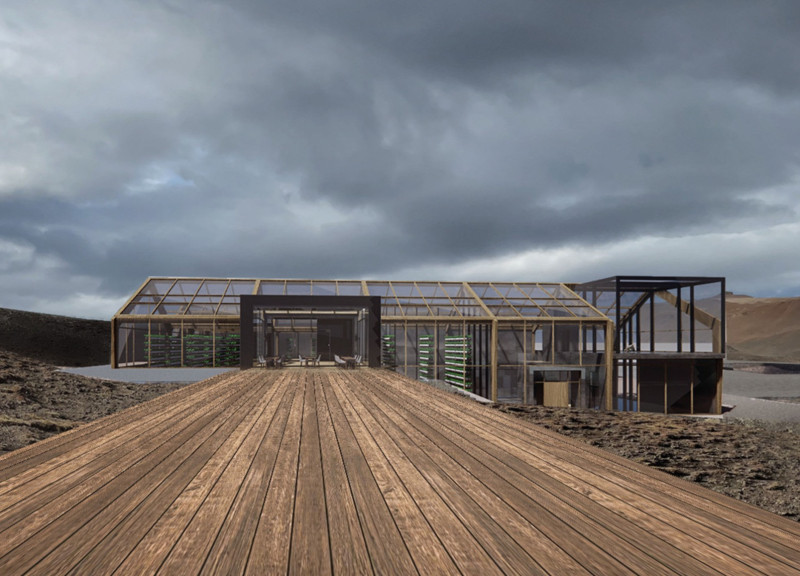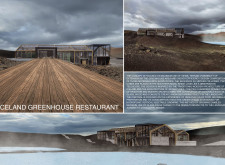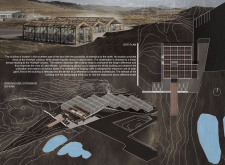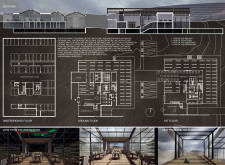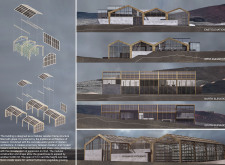5 key facts about this project
Functionally, the Iceland Greenhouse Restaurant operates as a hybrid space that combines the elements of a greenhouse with those of a restaurant. It serves primarily as a venue for patrons to enjoy locally sourced and hydroponically grown food, all while engaging with the entire growing process. Visitors are not only served fresh meals but are also immersed in an educational experience that highlights the importance of sustainable practices in food production.
The design of the restaurant features two primary cubic structures that resemble modern observation towers, skillfully maximizing the view of the volcanic landscape. This approach is both practical and aesthetic; it ensures that diners have unobstructed sightlines to the surrounding beauty while allowing ample natural light to filter into the interior spaces. Large glass panels dominate the façade, emphasizing transparency and an open connection with nature. This extensive use of glass is complemented by wooden elements that pay homage to Iceland's traditional architectural style, creating a warm and inviting environment.
Key details of the project include its thoughtful layout, which separates different functional areas while maintaining visual continuity. The dining area is designed to foster social interaction, with seating arranged to encourage engagement among guests as well as with the landscape outside. The kitchen facilities are strategically placed to allow diners to observe food preparation, creating a sense of immediacy and transparency in the dining experience. This arrangement reinforces the restaurant’s ethos of connection to food sources, providing an immersive experience that goes beyond mere dining.
One of the unique design approaches taken in this project is the structural integration of the greenhouse with the restaurant. Not only does this allow for efficient use of space, but it also creates a dynamic atmosphere where visitors can see the cultivation of their meals first-hand. The architectural design encourages exploration of both the interior and the exterior, with terraced landscaping that naturally draws patrons toward the surrounding features of the site. This landscaping serves dual purposes: it enhances the aesthetic value of the environment while also guiding visitors through various viewpoints of the breathtaking landscape.
The materials chosen for this project are indicative of a dedication to sustainability and local context. The use of treated timber alongside concrete ensure durability while maintaining the organic feel of the structure. The combination of wood with expansive glass panels allows the restaurant to blend seamlessly into its environment, reflecting the earth-tone palette that characterizes the Icelandic landscape.
In summary, the Iceland Greenhouse Restaurant is an architecture project that skillfully balances functionality with an appreciation for the natural world. It embodies the principles of sustainability and community engagement through its integrated approach to food production and dining. This project serves not only as a place to eat but as a venue that educates and inspires its visitors, fostering a deeper understanding of the relationships between food, landscape, and architecture. To gain a more comprehensive insight into its architectural plans, architectural sections, and architectural designs, readers are encouraged to explore the project presentation further. This exploration will provide a deeper understanding of the architectural ideas that have shaped this unique and thoughtful design.


